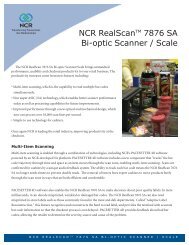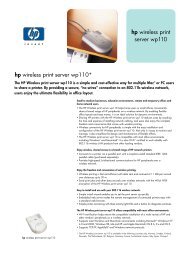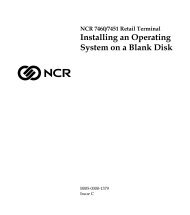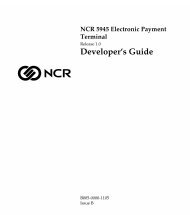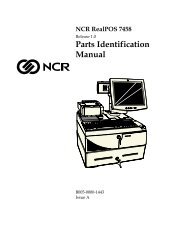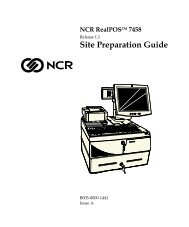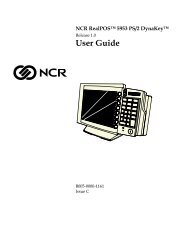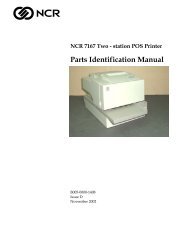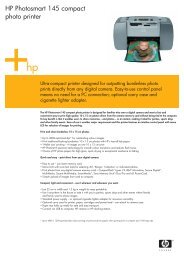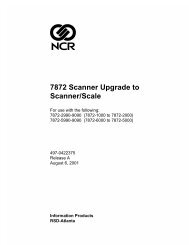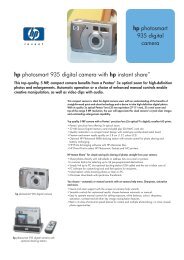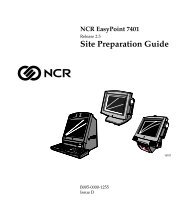ncr/doc/RealPOS/7455/Technical_Manuals/7455_Re... - Alsys Data
ncr/doc/RealPOS/7455/Technical_Manuals/7455_Re... - Alsys Data
ncr/doc/RealPOS/7455/Technical_Manuals/7455_Re... - Alsys Data
You also want an ePaper? Increase the reach of your titles
YUMPU automatically turns print PDFs into web optimized ePapers that Google loves.
1-20 Chapter 1: Product Overview<br />
Plug and Play<br />
The Processor BIOS also has a setup option to support the Windows<br />
runtime plug and play utilities. When this option is selected, only<br />
devices critical to boot are assigned resources by the BIOS. Device node<br />
information is available for all devices to ensure compatibility with<br />
Windows 95. System configuration information is stored in ESCD<br />
format. The ESCD data is cleared upon loss of the CMOS voltage.<br />
Advanced Power Management<br />
The Processor BIOS has support for both 1.1 and 1.2 Advanced Power<br />
Management (APM). The version of APM drivers loaded in the<br />
operating system by the user determines to which specification the<br />
BIOS will adhere. In either case, the energy saving Standby mode can<br />
be initiated by a keyboard hot key sequence or a time-out period set by<br />
the user.<br />
When in Standby mode, the Processor Board reduces power<br />
consumption by using the processor System Management Mode<br />
(SMM) capabilities and by spinning down hard drives and turning off<br />
VESA DPMS compliant monitors. During setup, the user may select<br />
which DPMS mode (Standby, Suspend, or Off) is sent to the monitor.<br />
The ability to respond to external interrupts is fully maintained while<br />
in Standby mode allowing the system to service requests such as incoming<br />
data or network messages while unattended. The user may<br />
also select any keyboard or mouse activity to take the system out of the<br />
energy saving Standby mode. When this occurs, the monitor and IDE<br />
drives are turned back on immediately.<br />
APM is disabled in BIOS by default; therefore, the user must enable<br />
this feature. The system must be configured with an APM driver in<br />
order for the system power saving features to take effect.



